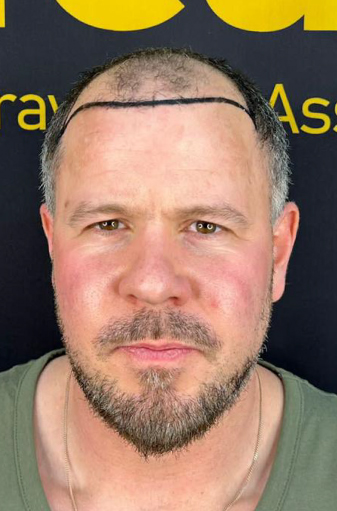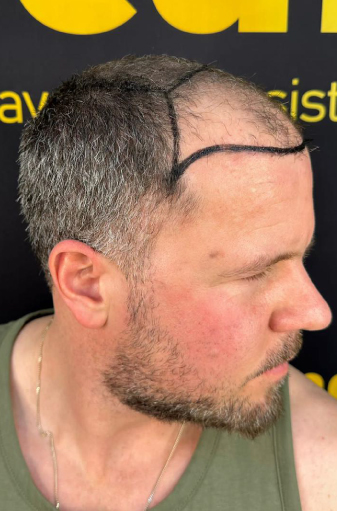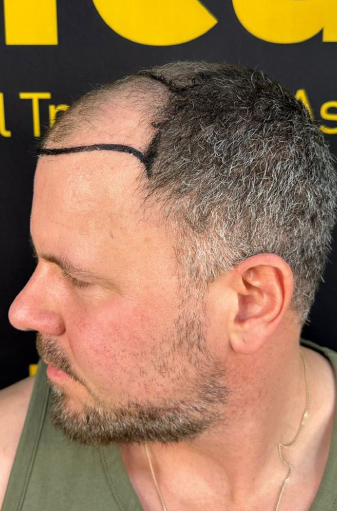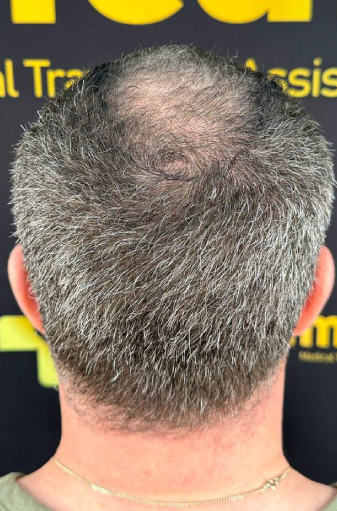Michael’s Hair Transplant
Case Study
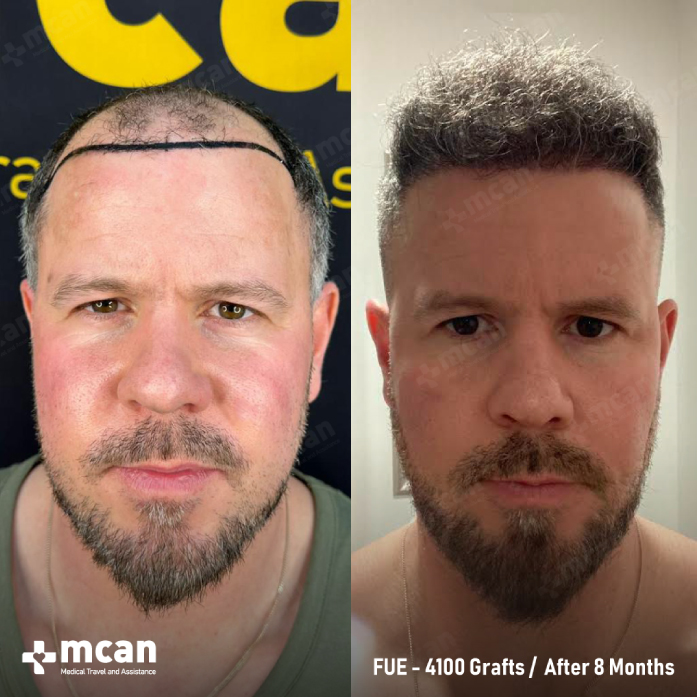
Case Overview
Michael, a 35-year-old male from the UK, suffered from androgenetic alopecia classified as Norwood Scale 4. His hair loss was mainly focused on the frontal and vertex regions with noticeable balding areas. Fortunately, Michael had a strong donor area with thick hair, providing an excellent graft extraction source. Considering the extent of his hair loss and the quality of the donor area, surgeons utilized the Follicular Unit Extraction (FUE) method harvesting a total of 4100 grafts.
| Norwood Scale: | 4 |
|---|---|
| Grafts: | 4100 |
| Technique: | FUE |
| Donor Strength: | Strong |
| Hair Type: | Straight |
Problem
Michael’s hair loss involved extensive thinning and balding across the frontal hairline and crown, typical of Norwood Scale 4 male pattern baldness. This resulted in large areas of baldness on the scalp that altered his appearance. He was worried that his hair loss would develop even further and damage his confidence. After detailed research, Michael chose MCAN Health for his hair transplant operation in Turkey.
Solution
After he consulted with the surgeons, they decided on the Follicular Unit Extraction (FUE) as it was the most appropriate method for the treatment of Michael’s hair loss. FUE is particularly effective for patients with extensive hair loss, such as those classified within the Norwood Scale 4 to 7 because it can extract a large number of grafts with minimal impact on the donor area.
In Michael’s case, 4100 grafts were harvested from his strong donor area with thick and dense hair. The grafts were then carefully implanted into the bald regions of the frontal hairline and vertex to create a natural-looking density. The precision of the FUE technique was particularly beneficial in Michael’s case, allowing for significant coverage while maintaining the natural thickness and texture of his hair.
Post-operative care for this operation included detailed guidance on how to take care of the donor and target areas, and also antibiotics to prevent infection. Michael was also informed about the process of graft shedding and regrowth, with the final results to become fully apparent within 12 to 18 months.
This case is an example of the suitability of the FUE technique for patients with advanced male pattern baldness, particularly when a strong donor area is available to achieve a good amount of restoration and natural results.
